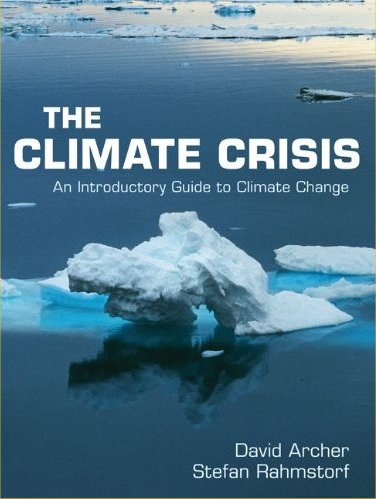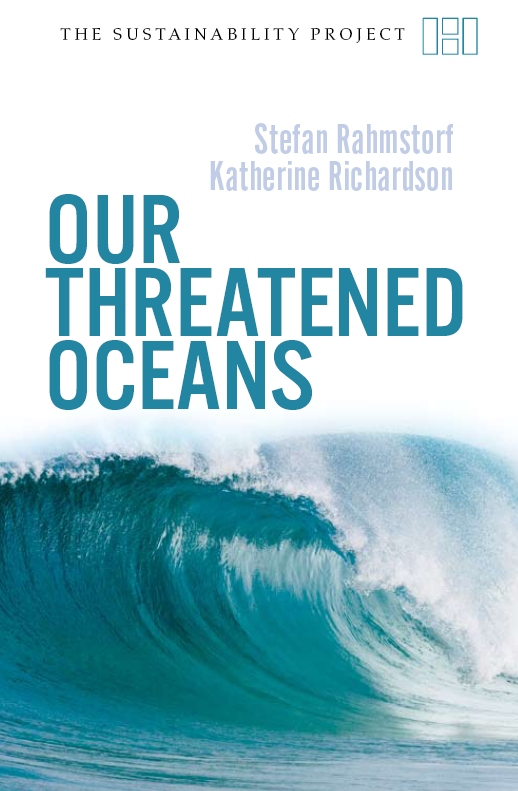The purpose of my Science Letter (Rahmstorf 2006)
was to draw attention to two points: First, the results of the two
models used by von Storch et al. are not "similar" as
claimed by the authors, as anyone can see from the graph in my Letter.
My second point was that "the error of simulated proxies
found in the HadCM3 model is smaller than the error margin given
by Mann et al. for their method and shown in the IPCC report."
This point is not disputed in the Response by von Storch et al.
Since they cannot claim a large bias for Mann's proxy reconstruction any more, von Storch et al. instead open up a new line of defense: they now claim that the error margin reported for the Mann et al. reconstruction should have been smaller than stated by its authors - and if it were smaller, then the bias claimed by von Storch et al. (2004) would still be significant. This is very subtle logic that one should take time to savour: they claim the stated error was too large, in order to still be able to claim that they found it was too small. Von Storch et al. say in their Response that the error margin of the Mann et al. 1999 reconstruction should have been given as 0.07 ºC (2 standard deviations, on 40-year time scales). You read correctly: less than a tenth of a degree! If the errors were really that small, this would be a sensational success of the reconstruction method: the error would be even smaller than that given by the Hadley Centre for their smoothed instrumental record for recent decades, with thousands of measurement stations.
von Storch et al. call this small error margin an "updated uncertainty bound for the MBH98 series", as it appears in a figure in a paper by Gerber et al. (2003). Mike Mann, on the other hand, maintains that the original error margin of Mann et al. 1999, shown in the IPCC report and in my Letter, is the correct one - that is a 2-sigma error of 0.17 ºC. The difference arises from assumptions on how "red" the proxy errors are, i.e. how correlated the errors are for subsequent years. The very low error margin claimed in von Storch's Response is based on almost no correlation. I find that assumption not very credible, and am quite surprised that von Storch et al. endorse it. First, do they really believe that the error in the proxy reconstruction is smaller than that of the recent instrumental record (and we are talking about comparable types of error here, measurement accuracy and spatial coverage)? Second, in their 2004 Science paper they show an error margin for their pseudo-proxies of about 0.2 ºC (their Fig. 2A), in line with Mann et al. 1999. And third, in their recent Response to the comment by Wahl et al. (2006), von Storch et al. (2006b) claimed that the proxy errors are highly correlated (even much more so than real proxy data suggest, see comment by David Ritson), as this was the only way to salvage their conclusions after Wahl et al. exposed their error in implementing the proxy method. They contradict themselves if they now claim the annual errors are almost uncorrelated.
So what is the bottom line of all this? In their recent responses to the comments by Wahl et al. (2006) and by myself, von Storch et al. had to concede three important points:
- Their ECHO-G simulation was affected by a major artificial climate drift.
- The bias of the pseudo-proxy method in HadCM3, which they did not show in their paper, was much smaller than that in ECHO-G, and in fact well within the error margin that Mann claimed (and still claims) for his method.
- For both models, the Mann et al. method was implemented incorrectly by von Storch et al. (2004); with correct implementation the bias is much smaller than claimed in that paper.
In each case, von Storch et al. argue that somehow their mistakes don't matter. The climate drift problem supposedly affects only the first four centuries of their run (although our own model trials replicating their faulty initialisation procedure suggest otherwise). The small bias suggested by HadCM3 supposedly still lies outside the error margin of the Mann et al. method (but only if you assume an unrealistically small error margin, based on assuming uncorrelated annual errors). And even with correct implementation of the Mann et al. method you can supposedly still get substantial bias (but only if you assume highly correlated annual errors, i.e. unrealistically red proxies).
Cutting through all this rhetoric, it becomes evident that the positions of von Storch and colleagues and Mann and colleagues are in fact not very far apart any more, for all practical purposes. There is no more talk about the "hockey stick" being "nonsense" and similar unwarranted claims by von Storch, which had brought the issue into the media and the US Senate. A panel of the US National Academy of Sciences has also just vindicated the "hockey stick". The remaining debate has now come down to rather small errors in the proxy method, of the order of 0.1 - 0.2 ºC (not a large bias of 0.7 ºC as initially claimed by von Storch et al.) This is interesting for experts but need not concern the general public. All political and media excitement about this issue has in fact been in vain.
References
M. E. Mann et al. (1999), Geophysical Research
Letters 26, 759.
S. Rahmstorf (2006), Science 312, 1872.
H. von Storch et al. (2004), Science 306, 679.
H. Von Storch et al (2006a) Science 312, 1872.
H. Von Storch et al. (2006b) Science 312, 529.
E. R. Wahl et al. (2006), Science 312, 529.
For further background explanation, see A mistake with repercussions on RealClimate.













